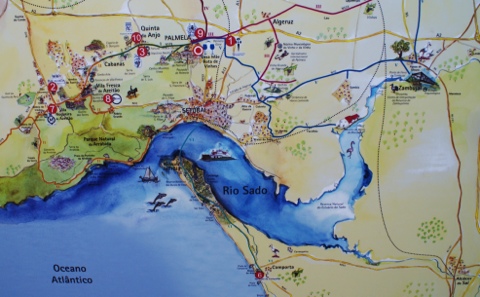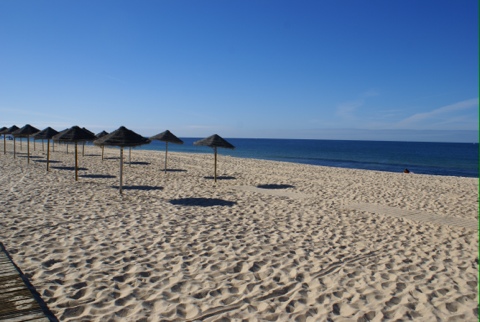Herdade da Comporta: sand wine
Posted on 15 October 2012
My first visit in Portugal this year was at Herdade da Comporta, in the eponymous town south-west of Lisbon, an hour’s drive through some nice landscape.
It makes wines classified as Setúbal peninsula, but it is located on a strip of land on the opposite bank of the Sado river, on sandy soils and both geologically and topographically belongs more to the Alentejo. The landscape is beautiful, dominated by pine forests and has a very rural feel to it.
Herdade da Comporta is currently owned by a bank but is one of the most important historic properties in the region, and actually Portugal’s largest private property with 12,000 hectares. Most of this is forests, and the most important agriculture here is rice. Comporta actually runs a rice restaurant and sells several varieties of rice, on which I’ll report from home when I have a chance to cook it. There is also an impressive 12-kilometer strip of the most perfect sandy beach I’ve seen in a long time, which apparently is well-managed with good services and definitely looks like a good vacation spot.
There are 70 hectares of a vineyard and a production of white, rosé and red in three price tiers. I generally didn’t think much of the coarse, somewhat fruitless whites, though the 2011 Parus, a 100% Antão Vaz grape, did show some promise. The red wines set a different tone altogether with the 2011 Chã das Rolas, a blend of Castelão and Trincadeira, offering good fruit and drinkability at an honest 3.50€ retail.
The main wine is called Herdade da Comporta. I didn’t like the 2007 which shows too much American oak. From the 2008 vintage onwards the oak is 100% French, and that makes a big difference. With nice richness and fine grain, it is a recommended with further 5-6 years’ ageing potential. Even better was the 2008 Parus, and 80% Alicante Bouschet (a grape more typical of the Alentejo than Setubal), impressively concentrated and digesting its 18 months of new oak rather well. At 14€ it is fairly priced and an interesting wine to watch as this young estate develops in quality and ambitions.
Disclosure
My trip to Portugal including flights, accommodation and wine tasting programme is sponsored by Quinta Wine Guide.





